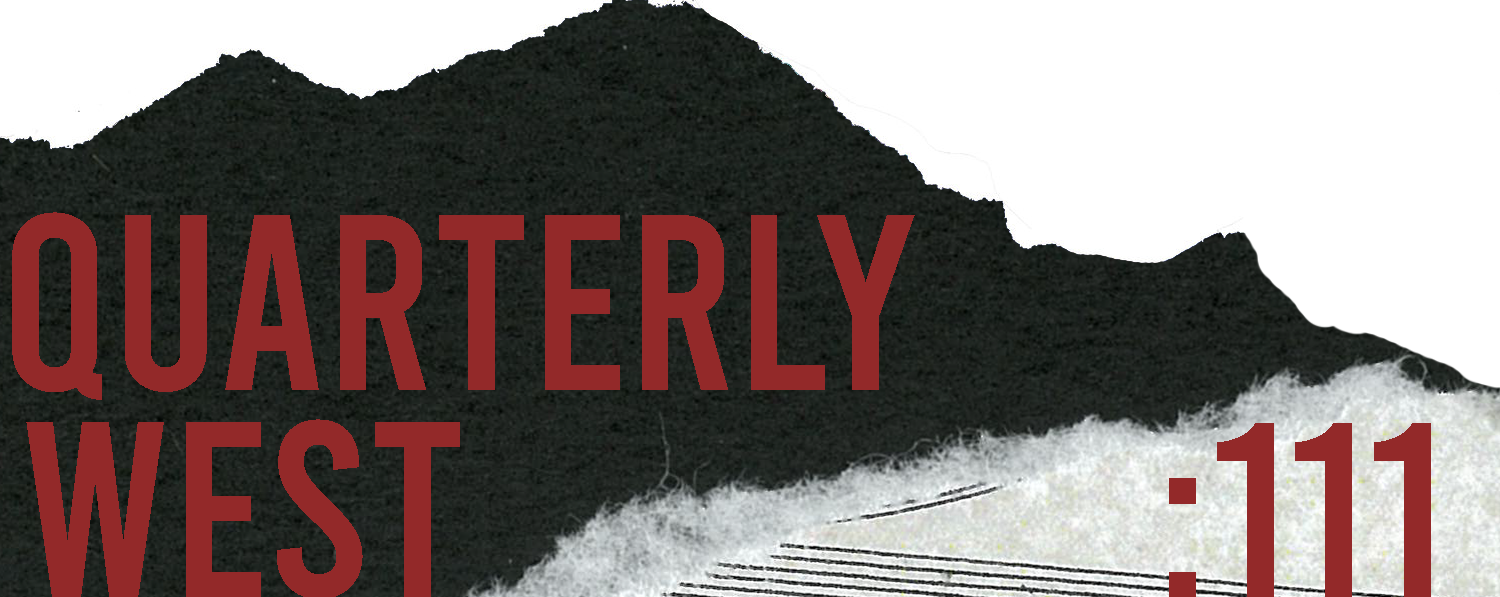Put it on paper,
extract it gingerly from the scene.
This line from Sarah Winn could serve as the controlling theme of her first collection Alma Almanac, winner of the Barrow Street Press Poetry Prize for 2017. The collection, rich in image and experimentation with narrative, functions as both ode and elegy for the places and people that inhabit memory.
From the beginning, Winn places us in a very specific natural terrain and introduces the people who dwell in it. This place, full of rivers and apple trees and fields, is both revered and run from. There are praise songs for the small places that provide joy in the journey, like the highway rest stop or the canning of apples at harvest time, and the poems are either firmly rooted or en route either away from or back to this topography, a “portage” that the author speaks of in the poem “Alma:”
Gorge of girl, shaped by erosion,
gorgeous, engorged by trees,
pitted by tart cherries giving over to sweetness,
transformed by weeds turned into dandelion salad,
shored up by life on lakes which were named for carrying.
I was made to portage, by Portage, a girl raised by reservoirs,
lifted from one lake and carried to the next,
made to find joy in journeys.
In lines washed with loss and joy, as all memories are, Winn carries her speaker confidently to and from this place, as in “My 95” where we learn that the speaker has sewn a running stitch back/ and forth, reinforced with years,/ made a sleeve of back ways. All roads lead to this very specific landscape, one that introduces the reader to not just the surroundings but the people who are important– a grandmother, who in “Baldwin Apples” tipped the ancient Dutch oven and my idea of plenty poured down; and a grandfather who in “King James Version” is remembered in images: Navy pea coat, fried bologna sandwiches, crackers and cheese.//Breast pocket contents: Mechanical pencil, index card of riddles.” They also give us the memory of a mother through imitation in “To Preserve November” - 1. Begin by shaping your mouth into the shape of your mother’s/when she was concentrating, or pinning a hem, her lips more full of/barbs than usual” and the memory of one lost in “Braeburn Apple” - In the end she was little more than a bundle of worn/stakes, left in the orchard. Still, her heart worked/ to keep the secret star of seeds inside shining.
Mythology, especially in the form of constellations and nature concerns, recurs to parallel a new mythology being created by the poems, a mythology where the speaker gains power both through remembering and forgetting, shining in a different light on the past, sometimes more harsh and sometimes more tender. In “For A Lighter Spring Carryon” the speaker tells us that The stars will be bright/smears, flat and easy to pack. Ready for use,/when you or Demeter appears over the horizon. In “Celestial Navigation,” Maybe Orion, cleaning/a rabbit fresh from hunt, dripped/blood onto his lap, splashed bright/nebulae, or maybe/ Artemis shorted circuits,/grieving after Orion fell/to the scorpion sting.
The most unique aspect of the collection, however, is the inclusion of figure descriptions, the types one would find on museum cards. These figures, interspersed throughout the collection, both inform and expand the poems that come before and after them. They appear at uneven intervals, some singular and some in groups, and they don’t appear in the Table of Contents at all, making them a surprise to the reader. Are they addenda or preface? Maybe both? That seems to be left to the reader to decide. At best, these catalogued items - pictures, artifacts, audio files, art plates - can serve as breathing points for the reader, places to pause and just ponder, as one would do in a museum.
The most effective figures are the ones that provide evocative descriptions of items or images that would resonate with any reader, not just someone dwelling in this soul museum of Winn’s creation. An example of one such figure page follows:
Figure 600: Audio cassette, unraveled in curls and tangles, Rewound, a woman’s voice whispers the same five words again and again. Promise me you won’t forget.
Figure 611: Bolt of grey cloth, folded into a neat square about one meter by one meter. Opened and laid nearly flat, a glittering lake too large to shout across, said to be bottomless.
Here the image of the unraveled cassette is familiar to most adults, the incantation of the voice one that could haunt any psyche. The very specific image of the folded fabric gives way to a relatable metaphor, a small, lost feeling in a large and unforgiving world. As a reader, it was sometimes a bit challenging to try and make connections between these artifacts and the traditional poems that they precede or follow, but there isn’t really a need to. Some of the descriptions seem a bit too scientific and sterile to lead into the emotional turns they take in their conclusions, but all in all the figures are an original and successful conceit.
In the poem “Alma,” which appears early in the book, the meanings of the word alma itself give the reader a lever to pry open the rest of the poems. We learn that the word in Latin means “nourished,” in Spanish, “soul.” In Arabic, it means “on the water,” and in Hungarian, “apple.” These concepts are woven through the entire collection, and upon investigation, the word also apparently means “young woman” in Hebrew and “jump” in Greek. Winn gives us in these pieces a young woman who is nourished by the water, the apple, who jumps from the landscape of the present into memory with dexterity, taking the reader on a soul-filled journey into love, loss, imagination, and landscape.
